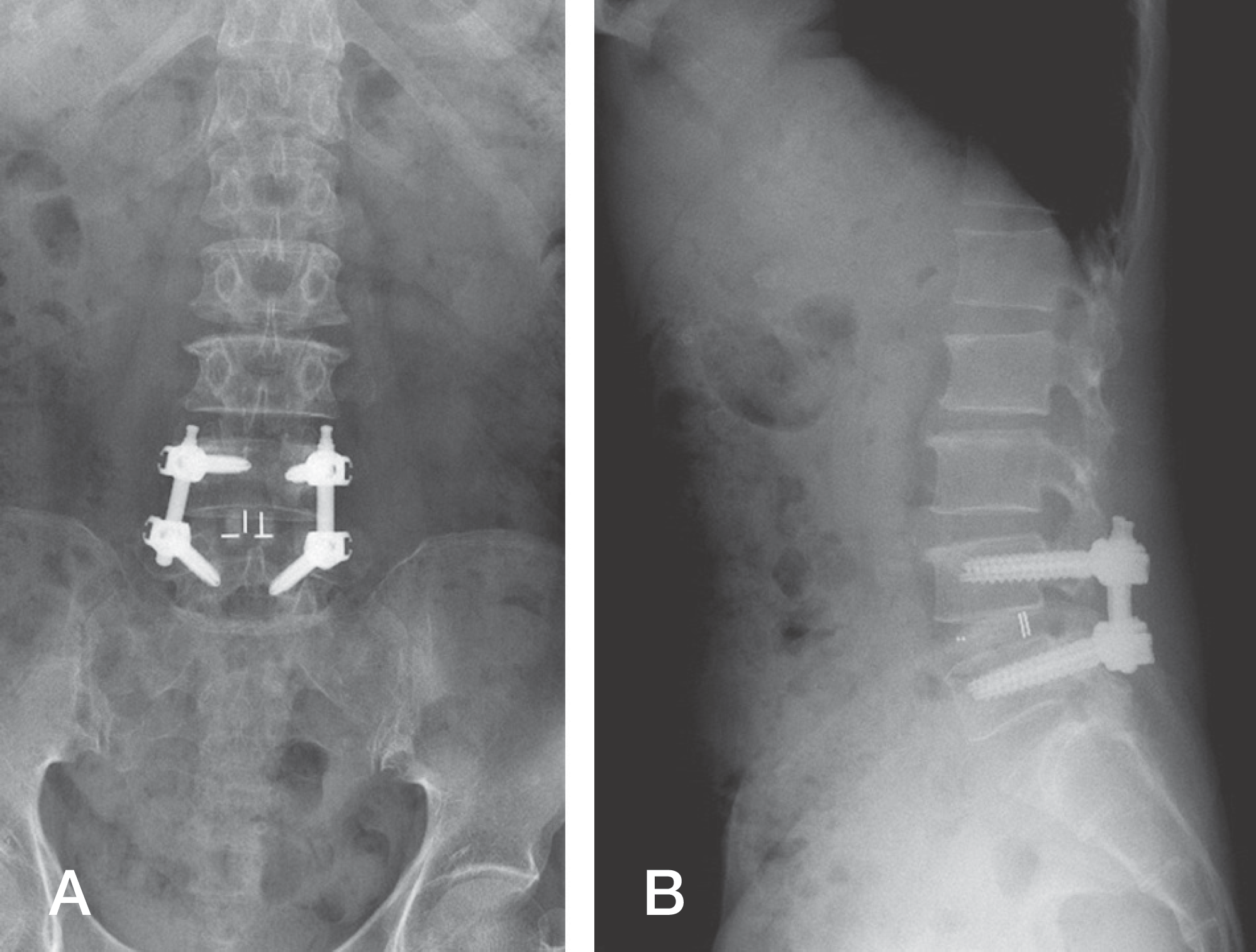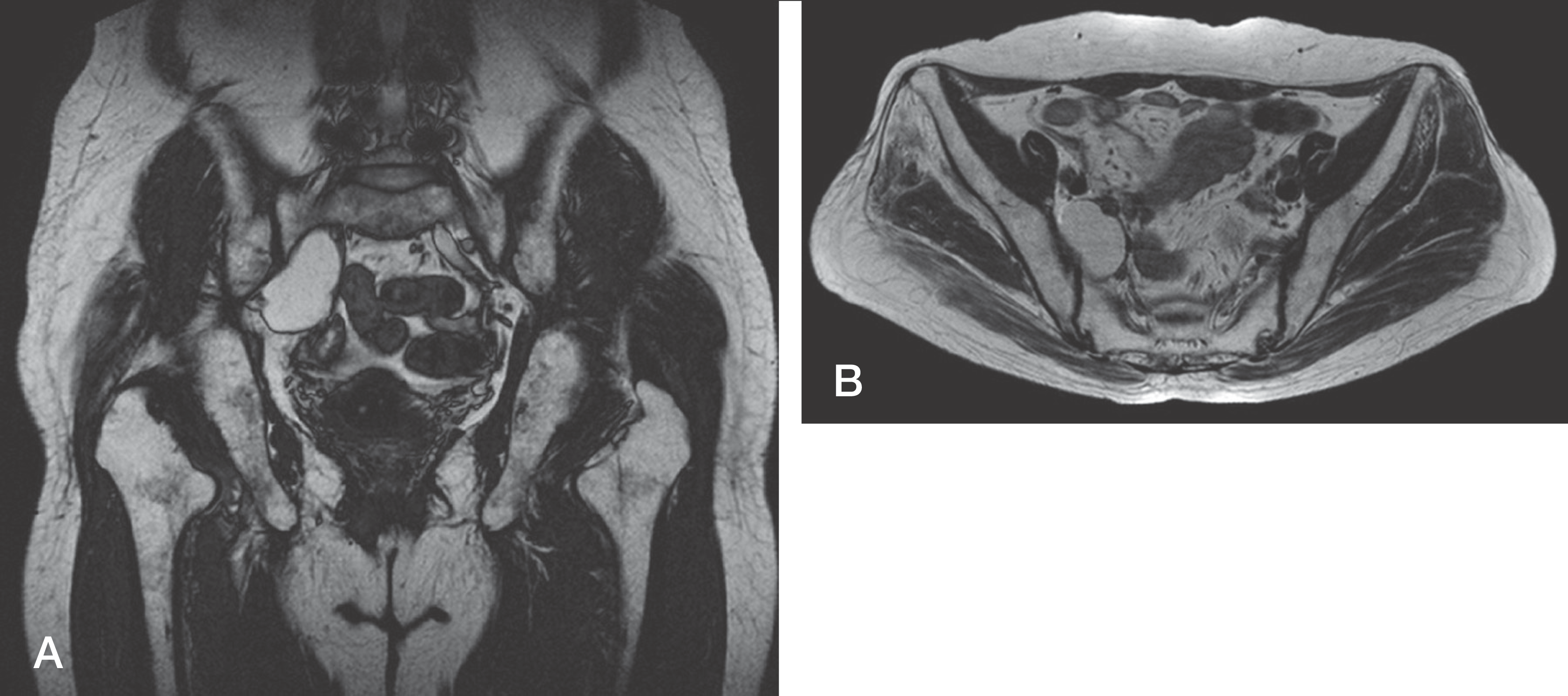Abstract
Objectives
To report a case of motor weakness caused by the increasing size of a sacroiliac joint cyst after spinal fusion.
Summary of Literature Review
There have been no reports on the increased size of a sacroiliac joint cyst and motor weakness after spinal fusion.
Materials and Methods
A 63-year-old female was admitted with low back pain and right sciatica. Magnetic resonance imaging (MRI) findings showed the spinal canal narrowing at L4–5 and a cystic lesion on the right sacroiliac joint. After surgery, the symptoms were relieved.
REFERENCES
1. Ha KY, Kim YH, Kang KS. Surgery for Adjacent Segment Changes after Lumbosacral Fusion. J Korean Soc Spine Surg. 2002; 9:332–40.

2. Hwang CJ, Lee SW, Ahn YJ, et al. Risk Factors for Adjacent Segment Disease After Lumbar Fusion. J Korean Soc Spine Surg. 2008; 15:44–53.

3. Bastian L, Lange U, Knop C, et al. Evaluation of The Mobility of Adjacent Segments after Posterior Thoracolumbar Fixation: A Biomechanical Study. Eur Spine J. 2001; 10:295–300.

4. Park P, Garton HJ, Gala VC, et al. Adjacent Segment Disease after Lumbar or Lumbosacral Fusion: Review of the Literature. Spine (Phila Pa 1976). 2004; 29:1938–44.

5. Ha KY, Lee JS, Kim KW. Degeneration of Sacroiliac Joint After Instrumented Lumbar or Lumbosacral Fusion: A Prospective Cohort Study over Five-Year Followup. Spine (Phila Pa 1976). 2008; 33:1192–8.
6. Kikuchi S, Konno S, Kayama S, et al. Increased Resistance to Acute Compression Injury in Chronically Compressed Spinal Nerve Roots: An Experimental Study. Spine (Phila Pa 1976). 1996; 21:2544–50.
Fig. 1.
Initial magnetic resonance imaging (MRI) reveals spinal stenosis at L4–5 in the sagittal (A) and the axial (B) images, and a cystic lesion measuring 1.6 cm×1.0 cm at the inferior surface of the right sacroiliac joint in the coronal (C) image.

Fig. 2.
Posterior decompression and posterior lumbar interbody fusion with a cage was performed at L4–5 (A, B).





 PDF
PDF ePub
ePub Citation
Citation Print
Print




 XML Download
XML Download